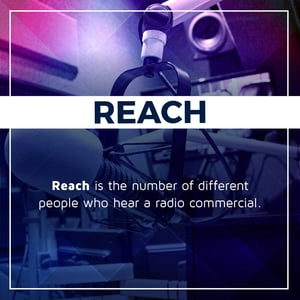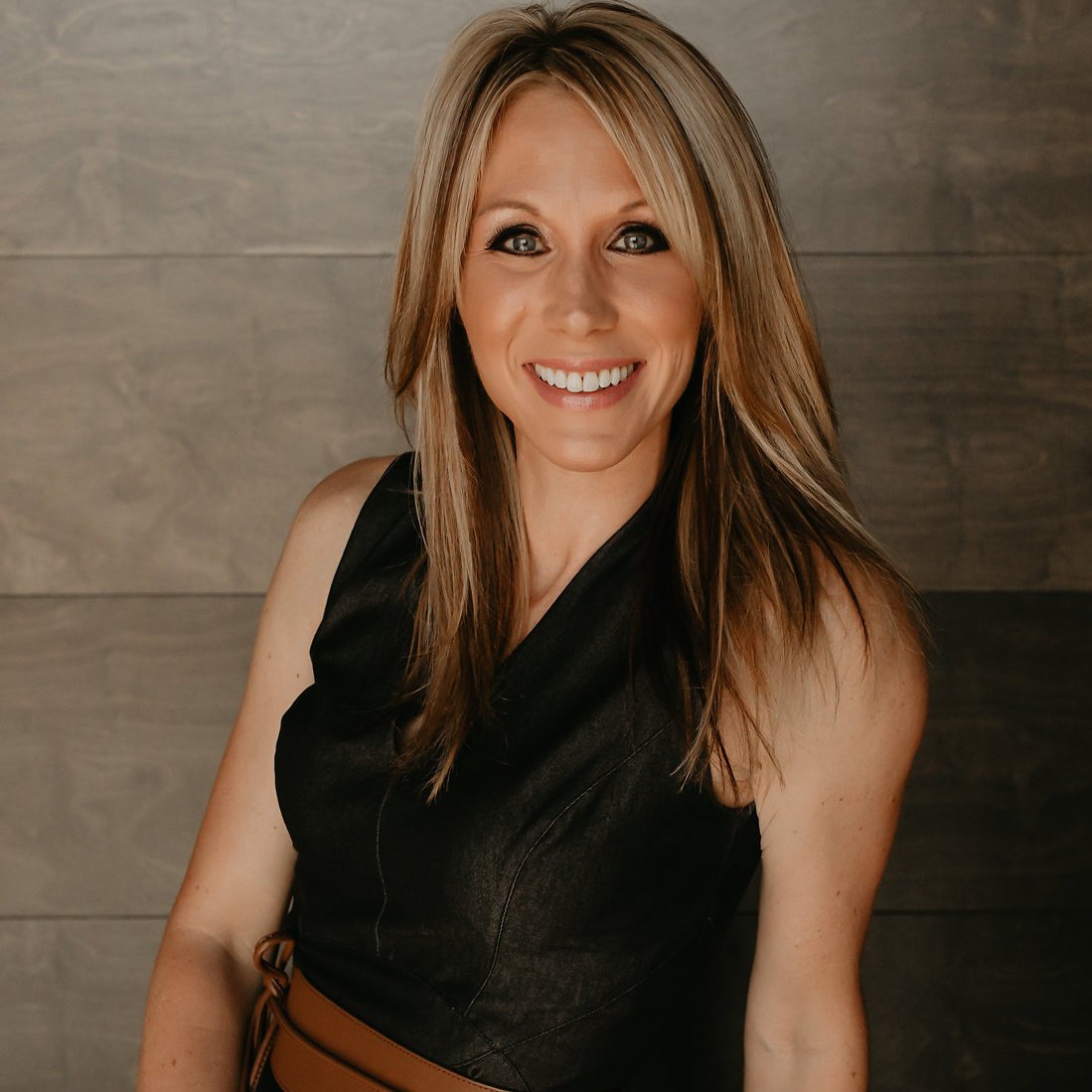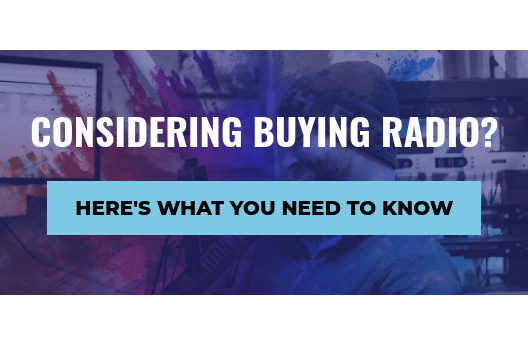Radio is Still the Top Medium for Advertising Effectiveness
Despite all the changes in the last decade in how Americans access music, AM/FM radio is still the most cost-effective advertising medium today. It's an inexpensive way to reach your existing and potential customers.
There are three big variables you want to control when scheduling radio ads: reach, frequency, and consistency. I'm going to touch on each one specifically.
Frequency: What is the Magic Number?
 Frequency is the number of times your ad is heard by the average person over the course of a week. How often are you sharing your message with the target audience? Be selective in targeting because you don’t have to reach everyone. Everyone isn’t your potential customer. Once you’ve identified your target audience, it’s time to build frequency. Think of it as talking to people a lot.
Frequency is the number of times your ad is heard by the average person over the course of a week. How often are you sharing your message with the target audience? Be selective in targeting because you don’t have to reach everyone. Everyone isn’t your potential customer. Once you’ve identified your target audience, it’s time to build frequency. Think of it as talking to people a lot.
Based on the way consumers use radio, there are three key strategies that can be optimized for building frequency:
- Advertise in short, but powerful bursts.
- Concentrate advertising into narrow times of day, such as the morning drive or night show.
- Dominate a day and saturate a minimum number of radio stations for an entire day.
When it comes to frequency, there is a scientific algorithm to determine what is best. It’s about 3.4 impressions per person per week. We round that down to three. This is best achieved using a 21/52 schedule, 21 ads a week, 52 weeks per year. The exact number of ads per week will vary depending on the station(s) you’re buying. A reputable radio-branding expert has the tools to ensure frequency is included in your branding strategy.
Simply put, frequency is the number of times your commercial plays from a single source over a given time. Again, that time frame is typically a week. To capitalize on frequency, you should run more ads per week, on a single radio station. The equation here is simple:
Frequency = Total Number of Ads per Week per Station
The time-of-day you run your commercials will play a major role in how much frequency you can afford per station. Here again, the morning show is more expensive than overnights. It's wise to keep that in mind when creating your radio schedules with your rep.
The Downsides of Increasing Your Frequency
Having massive frequency on a station can quickly eat through your marketing budget. It also limits your message to just one station, even if multiple stations fit your target audience.
Reach: Finding Your People

If
If your objective is promotion, meaning you want the target audience to take a specific action, reach is required. There are a few different concepts that can be employed to talk to a lot of people about your brand:
- Advertising over a longer period of time
- Advertising during multiple times of day
- Using a few different stations
- Taking advantage of short-duration commercials. A High Impact Plan (HIP) using six-second ads at the beginning of every commercial break all day long. Or you could opt
for : 15 second ads with a short and sweet message.
The stations you choose all have coverage areas, or where the stations reach geographically-speaking. Regardless of format and size of broadcast, every radio station thrives on one thing: listeners. Each area has specific data on demographics, and according to recent Nielsen research, radio actually has the most reach among American media consumers. 93% of adults listen to the radio each week, compared to 87% who watch TV. The wide variety of radio formats is a dream for advertisers because radio is so targetable.
In any advertising medium, reach refers to the number of people your message reaches (hence the term) in a given time frame, typically a week. For radio, you can increase your reach by placing ads on more radio stations. It’s a pretty straightforward equation:
Total Reach = Station A Listeners + Station B Listeners + Station C Listeners + Station D Listeners
In essence, your reach is the sum total of the listenership on each station you place ads on. There will be some variances in day-parts. For example, the morning show will have a larger listening audience than overnight programming; however, the above formula still holds true.
Every radio station has a coverage map, which is the reach of that station from a geographic standpoint. Generally speaking, a larger geographic reach means a larger listener reach.
To build reach with a radio campaign, it's a good idea to advertise consistently over a long period of time. And do so several times per day at peak listening hours, like the morning drive or during popular programs - such as the Dave Ramsey Show, or the CMT Top 20 Countdown. You can maximize reach by advertising on several radio stations - just be careful not to dilute frequency.
The Downsides of Increasing Your Reach
Advertising on four stations, like the above illustrates, will blow a small advertising budget quickly and inefficiently. You need to balance your reach with other variable to maximize your radio adverting results.
Consistency: The Final Element

Reach and frequency are opposing forces in the radio advertising realm. They compete with each other for dominance. By increasing one, you decrease the other - unless you have more money to feed it. To be effective, your business doesn’t have an infinite budget; however, reach and frequency remain crucial elements for a successful campaign.
How do you find the perfect balance? It's easy, ask the experts. Your radio rep can help immensely here. Optimizing reach and frequency based on your specific goals and budget requirements is one of the many things they specialize in.
The Formula for Success
We’ve found that there’s actually a formula you can utilize to better balance reach and frequency. Here it is:
Success = 21 Ads per Week, 52 Weeks per Year per Station
In radio lingo, we call that a 21/52 schedule, or branding.
Psychologically speaking, the average person needs to hear an advertising message three times per week for it to be memorable. That’s called a “Three Frequency.” Knowing what we know about radio listening habits and average time spent listening, a message must be played about 21 times per week to reach the average listener three times.
This is just one station. Spreading your budget thin across multiple radio stations will maximize your reach, but dilute frequency. I cannot emphasize enough the importance of a strong frequency. If you were forced to choose between reach, and frequency, always choose frequency.
To illustrate this, I’m going to quote Thomas Smith from his book Successful Advertising and his thoughts on frequency:
“The 1st time people look at an ad, they don’t see it.
The 2nd time, they don’t notice it.
The 3rd time, they are aware that it is there.
The 4th time, they have a fleeting sense that they’ve seen it before.
The 5th time, they actually read the ad.
The 6th time, they thumb their nose at it.
The 7th time, they get a little irritated with it.
The 8th time, they think, “Here’s that confounded ad again.”
The 9th time, they wonder if they’re missing out on something.
The 10th time, they ask their friends or neighbors if they’ve tried it.
The 11th time, they wonder how the company is paying for all these ads.
The 12th time, they start to think that it must be a good product.
The 13th time, they start to feel the product has value.
The 14th time, they start to feel like they’ve wanted a product like this for a long time.
The 15th time, they start to yearn for it because they can’t afford to buy it.
The 16th time, they accept the fact that they will buy it sometime in the future.
The 17th time, they make a commitment to buy the product.
The 18th time, they curse their poverty because they can’t buy this terrific product.
The 19th time, they count their money very carefully.
The 20th time prospects see the ad, they buy what it is offering.”
Notice how the prospect isn’t buying anything until after the 20th repetition of the same message? That’s why you should run a 21/52 schedule. Twenty-one ads per week, fifty-two weeks per year.
So, Is Radio Advertising Effective?
Short answer? Yes. No other medium can reach such a broad cross section of potential customers as radio can. In addition to the audience, there's the attention factor. Being able to place your company's marketing message in front of a consumer for 30 (or 60) seconds is a gold mine. Compare this to the few seconds the average web browser spends on a single web page.
Repetition (frequency) also helps your local radio ad be more effective. While that web browser may never return to that web page, he or she will likely hear your radio ad multiple times. And, of course, repetition enforces recognition.
Low production costs are another advantage to local radio advertising. With a radio ad, you don't need a spokesperson or an elaborate set; you just need a good, well-written script.
While the glitz and novelty surrounding online radio stations can make it seem that such stations are taking over the market, the truth is that local radio is still as relevant as ever and offers small business owners a way to reach a lot of people without spending all of their marketing budget.



